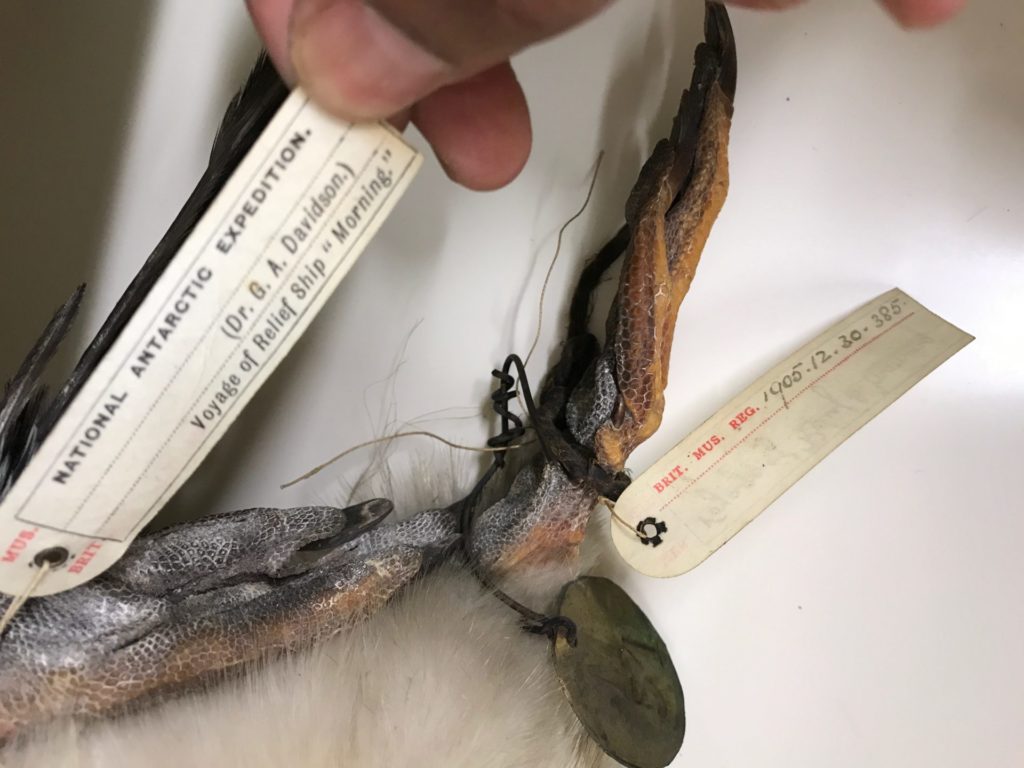
Dr. Sushma Reddy Contributes to Groundbreaking Research on Gentoo Penguins
Dr. Sushma Reddy contributes to research on species-level differences in Gentoo penguins
Published01/11/2021 , by Emily Dzieweczynski
Museum specimens not only teach us valuable information about the past but can also help scientists make new discoveries about biodiversity. By using museum specimens to study differences in Gentoo penguins, Reddy, the Bell Museum’s Breckenridge Chair of Ornithology, and her collaborators helped describe four new species of penguins.

Dr. Sushma Reddy with penguin specimens collected from past Antarctic expeditions conducted by the Bell Museum.
Previously scientists had noticed differences in the appearance of Gentoo penguins (Pygoscelis papua), a species with a circumpolar distribution across the Southern Ocean. This made Reddy and her team of researchers curious—what if these weren’t minor differences in one species of penguin, but actually indicated that these are distinct species altogether?
To find out, the team decided to study species-level diversity in Gentoo penguins. They developed a plan to use genomics and morphometrics to analyze penguin differences. Genomics is a biological study that focuses on structure, function, and evolution of genomes, the complete set of an organism’s DNA. Morphometrics uses geometry and biology to study the shape variation, such as size or length, of organisms’ features. For example, morphometrics would compare the length of penguin’s beaks, while genomics would analyze differences at the level of DNA.
Accessing living penguins is difficult given the remote locations of these populations. Thanks to incredible natural history collections across the globe, the team was able to study dozens of specimens collected from past expeditions to analyze morphological variation of penguins. Using collections at the American Museum of Natural History (New York), the Field Museum (Chicago), and the British Museum (Tring, UK), the team has conducted their analysis on many Gentoo specimens—even some very famous ones. At the British Museum, Reddy recalled finding the specimens that were presented to the Queen of England from Ernest Shackleton’s expeditions!

A specimen from historic British expeditions to Antarctica led by Scott and Shackleton
The team, including Reddy and her collaborators, recently published a paper of their research, which revealed clear differences in both DNA and morphology and proposed the reclassification of Gentoo penguins into four distinct species. Now comes the fun part—when you discover a new species, you get to name it! The team gave the four species new scientific nomenclature: P. papua, P. ellsworthi, P. taeniata, and P. poncetii. Interestingly, the P. poncetii is named after Sally Poncet, a scientist who has devoted her life’s work to seabird conservation and also lives on South Georgia Island.
Due to the rapidly changing environment, reclassifying this species is important so we have accurate representations of population size to determine which species may be in decline and therefore in need of conservation actions. For example, the new research suggests that both P. taeniata and P. poncetii are in decline, whereas prior to this reclassification all populations were considered to be one abundant species with no conservation concerns.
Climate change is a serious threat to penguins in Antarctica because it can lead to dramatic alterations of their habitat and prey. By looking at how Gentoo penguin differences vary both now and throughout the history of the species, scientists hope to uncover how past adaptations to their environment might help to predict how they will respond to the changing climate. Reddy and the team hope that the reclassification will lead to new insights on penguin adaptation, a better understanding of their evolutionary history, and more precise information for their protection.
The team plans to continue their work by conducting an expedition to study these penguin populations on the South Georgia Islands off of Antarctica once COVID travel restrictions have been removed.

